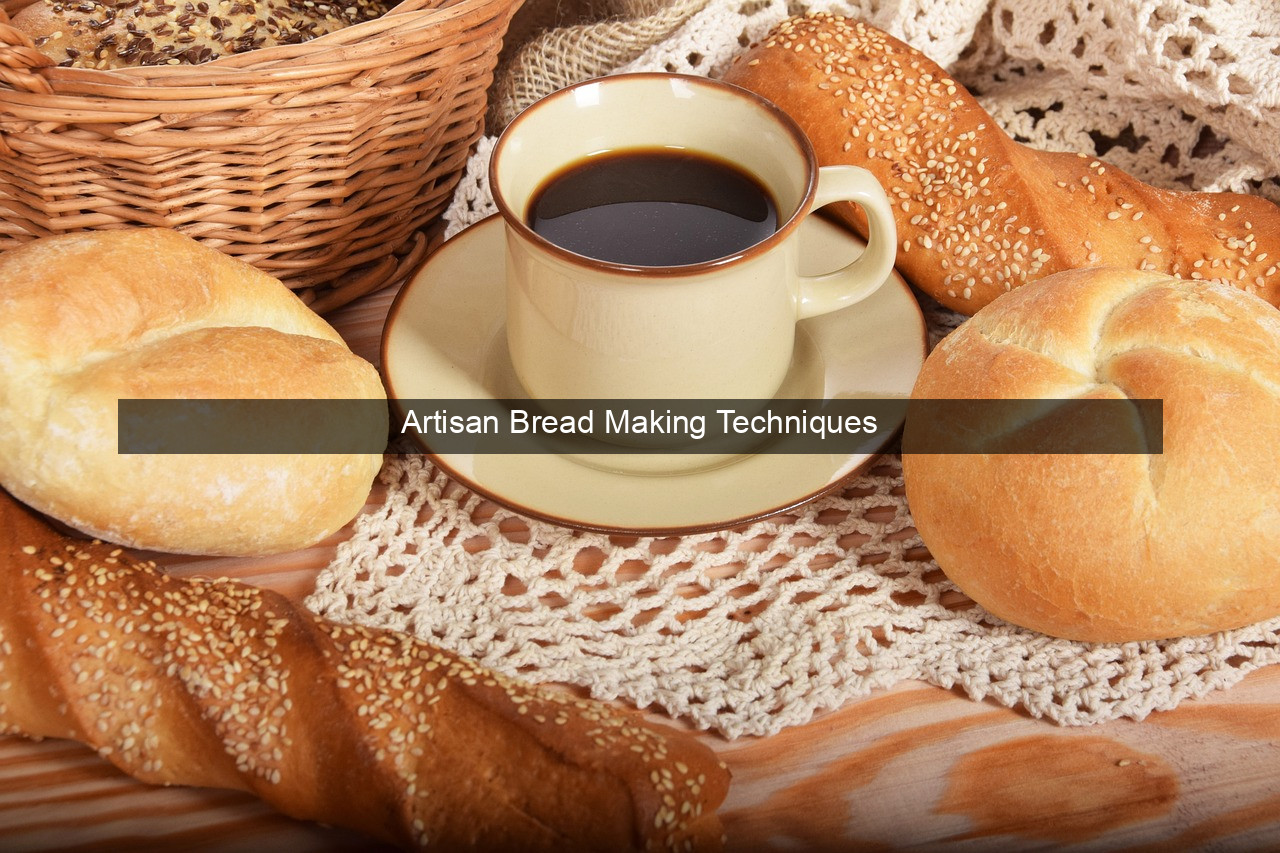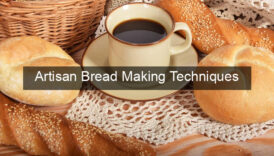Artisan Bread Making Techniques

- Artisan Bread Making Techniques
- Unlocking the Secrets of Artisan Bread Making
- Understanding the Fundamentals of Dough
- The Importance of Flour
- The Magic of Yeast
- Water: The Essential Element
- Kneading and Shaping Techniques
- The Art of Kneading
- Shaping the Dough
- Baking and Enjoying Your Artisan Bread
- The Baking Process
- Conclusion

Unlocking the Secrets of Artisan Bread Making

The aroma of freshly baked bread, its crust crackling gently as it cools, is a sensory experience that transcends mere sustenance. Artisan bread making, with its emphasis on time-honored techniques and high-quality ingredients, elevates this simple pleasure to an art form. From the starter’s whisper to the final rise, each step in the process contributes to the final product’s complex flavor and texture. This journey into artisan bread making will explore the essential techniques that transform flour, water, and yeast into a culinary masterpiece. Whether you’re a novice baker or a seasoned pro, delving into the nuances of artisan bread creation will undoubtedly enhance your appreciation for this ancient craft. Prepare to embark on a rewarding exploration of flavor, texture, and the sheer satisfaction of creating something truly special with your own hands.
Understanding the Fundamentals of Dough
The Importance of Flour
Flour is the foundation of any bread, and in artisan bread making, its quality is paramount. Different types of flour, such as bread flour, all-purpose flour, and whole wheat flour, possess varying protein contents, which directly impact the gluten development and final texture of the bread. Understanding these differences is crucial for achieving the desired outcome. Experimenting with different flour blends can also add complexity and nuance to your loaves.
Bread flour, with its high protein content, is ideal for creating loaves with a robust structure and chewy crumb. All-purpose flour offers versatility, suitable for a wider range of bread types, while whole wheat flour adds a nutty flavor and denser texture. The choice of flour is the first step in shaping the character of your artisan bread.
Consider sourcing high-quality flour from local mills or specialty stores for the best results. Freshly milled flour often retains more of its natural flavors and nutrients, contributing to a superior final product. Paying attention to the flour’s characteristics is a key element in mastering the art of artisan bread making.
The Magic of Yeast
Yeast, the tiny organism responsible for leavening bread, is another critical component. Active dry yeast, instant yeast, and sourdough starter are common choices, each with its unique characteristics and impact on the final product. Active dry yeast requires proofing, while instant yeast can be added directly to the dry ingredients.
Sourdough starters, on the other hand, are living cultures that add a distinctive tangy flavor and enhance the bread’s keeping qualities. Cultivating a sourdough starter requires patience and dedication but yields unparalleled results in artisan bread. The choice of yeast significantly influences the flavor profile and overall experience.
Experimenting with different types of yeast can open up a world of flavor possibilities. From the subtle nuances of instant yeast to the complex tang of a well-maintained sourdough starter, the choice of leavening agent is a crucial decision in the artisan bread making process.
Water: The Essential Element
Water hydrates the flour and activates the yeast, playing a vital role in dough development. The temperature of the water is critical, as it directly affects the rate of fermentation. Using filtered water can also improve the flavor and consistency of the dough.
The amount of water used, expressed as baker’s percentage, is a crucial factor in determining the final hydration level of the dough. A higher hydration dough will result in a more open crumb structure, while a lower hydration dough will yield a denser loaf. Finding the right balance is essential for achieving the desired texture in your artisan bread.
Paying attention to the water quality and temperature can significantly impact the final outcome. Experimenting with different hydration levels can also lead to exciting discoveries and allow you to tailor the bread’s texture to your preferences.
Kneading and Shaping Techniques
The Art of Kneading
Kneading is a crucial step in developing gluten, the protein network that gives bread its structure. Proper kneading techniques ensure a strong and elastic dough that can hold its shape during proofing and baking. The kneading process involves a rhythmic pushing, folding, and turning of the dough.
The windowpane test, where a small piece of dough is stretched thin to see if it forms a translucent membrane, is a reliable indicator of sufficient gluten development. Over-kneading, however, can result in a tough, dense loaf, so finding the right balance is essential. Mastering the art of kneading is fundamental to achieving the perfect texture in artisan bread.
Different kneading methods, such as hand kneading and using a stand mixer, can be employed, each with its own advantages. Experimenting with different techniques can help you find the method that best suits your preferences and produces consistent results.
Shaping the Dough
Shaping the dough is where artistry and technique converge. Different shaping methods, such as boules, batards, and baguettes, impart unique characteristics to the final loaf. Proper shaping techniques ensure even proofing and contribute to the bread’s aesthetic appeal.
Tightly shaping the dough helps create surface tension, which promotes oven spring and a well-defined crust. Practice and patience are key to mastering the various shaping techniques and achieving the desired form in your artisan bread. Each shape tells a story and contributes to the overall sensory experience.
Learning to shape different types of bread opens up a world of creative possibilities. From the rustic charm of a boule to the elegant taper of a baguette, each shape offers a unique visual and textural experience.
Baking and Enjoying Your Artisan Bread
The Baking Process
Baking transforms the shaped dough into a golden-brown masterpiece. Understanding oven temperature and baking time is crucial for achieving the perfect crust and crumb. Using a baking stone or Dutch oven can help create a crisp crust and even baking.
Preheating the oven thoroughly and creating steam during the initial baking phase are essential for promoting oven spring and a well-developed crust. Monitoring the bread’s internal temperature with a thermometer ensures that it is fully baked. Achieving the perfect bake is the culmination of all your efforts in artisan bread making.
Experimenting with different baking methods and oven temperatures can help you fine-tune your approach and achieve consistent results. The baking process is the final step in transforming simple ingredients into a culinary delight.
Conclusion
Artisan bread making is a rewarding journey of discovery. By understanding the fundamentals of dough, mastering kneading and shaping techniques, and perfecting the baking process, you can create bread that is not only delicious but also a testament to the art of bread making. The satisfaction of transforming simple ingredients into a beautiful and flavorful loaf is a truly rewarding experience.
What is the best type of flour for artisan bread?
Bread flour, with its high protein content, is generally preferred for artisan bread, but experimenting with different flours can yield interesting results.
How long does it take to make artisan bread?
The time required varies depending on the recipe and type of yeast used, but it typically takes several hours, including proofing and baking time.
What is the windowpane test?
It’s a method to check gluten development by stretching a small piece of dough to see if it forms a thin, translucent membrane.



